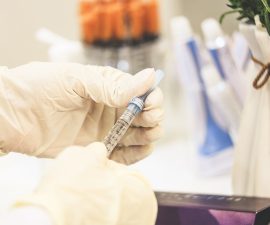… Continued …
What happen in your blood glucose when fasting!
In healthy individuals (non-diabetics), the release of insulin and glucagon is naturally designed to maintain blood glucose levels within normal range. While insulin is responsible to naturally decrease high blood glucose level, glucagon is the natural mechanism of the body to help increase low blood glucose level.
So glucagon works in the opposite way of insulin. It is released when your body lacks of glucose in the bloodstream (such as when fasting or when you need additional glucose such as during vigorous exercise). And it is produced in the liver, too – by cells called alpha cells.
Glucagon is important hormone to help keep your blood glucose level high enough for your body to keep functioning well. When it is released, it can:
- Stimulate the production of glucose in the liver. The stored glycogen is turned back to become glucose and released into the bloodstream to help restore the balance your blood glucose!
- Break down another source for energy, such as stored fats (triglycerides).
- Activate gluconeogenesis to use amino acids for energy.
This suggests that glucagon can help provide the energy from several different sources, not only glycogen.
What fasting blood sugar test is used for?
It can be used for one of procedures to help diagnose diabetes. In diabetics, it is also used to help test the effectiveness of dietary changes or different medications in controlling blood glucose level.
What does the test result mean?
Normal fasting blood glucose is about 72 to 108 mg/dL (4.0 to 6.0 mmol/L). Higher than this range may point to pre-diabetes or even diabetes!
What you need to prepare before the test? You need to forbear from eating or drinking anything other than water for about 8 hours. Typically, you take the test in the morning after fasting, before your breakfast!
Normal blood sugar level right after eating
When you take the test right after meal, it will be probably vey high (greater than 180 mg/dL) – even though if you don’t have diabetes. The kind of food you eat (such as after eating low or high sugar food – complex or simple carbohydrate) can have a significant effect to this test result.
For instance, it can be very different when you check it right after eating sweets (such as ice cream) or low-GI foods (such as whole grain). GI stands for glycemic index, a variable used to measure how fast different foods in affecting blood glucose level! For comprehensive guide about diet for diabetes, see this section!
Blood glucose right after a meal is commonly not used to diagnose diabetes or to monitor blood glucose levels in people who already diagnosed as diabetics. Because it is not accurate enough to describe the health of your glucose metabolism!
If you want to see how your meal affected your blood glucose, take the test about 1-2 hours after meal!
See also:
Can Exercise Reverse Gestational Diabetes?
Does Cinnamon Lower Blood Sugar (Gestational Diabetes)?
How to Lose Weight with Diabetes and Hypothyroidism?
Type 2 Diabetes Food List (Recommended – Forbidden)
Normal blood sugar 1 – 2 hours after eating
Insulin, hormone produced in the pancreas, is responsible to regulate your normal blood glucose. After eating (when there is high amount of glucose in the bloodstream), pancreas releases more insulin to help glucose to enter the body’s cells. As a result, the level of glucose in the blood backs to normal.
The high insulin in the blood is also a signal when the liver converts excess glucose to become glycogen. When the body is lack of glucose in the blood (such as when you have not taken a meal in a while), glycogen is converted back to glucose and released into bloodstream.
Blood sugar levels table
For summary, here is table for your guidance about the normal and abnormal of blood sugar levels when fasting, before and after meal!




